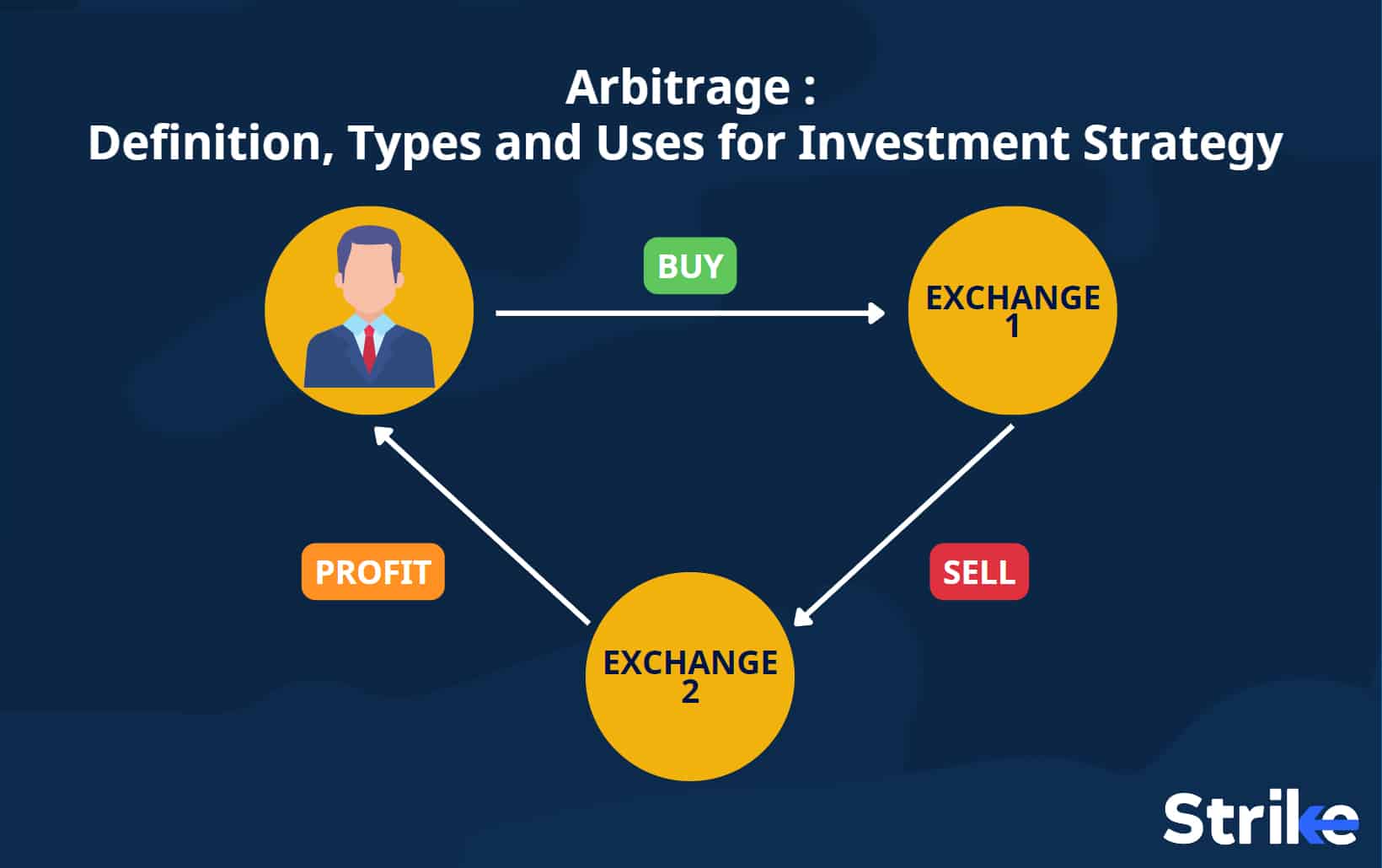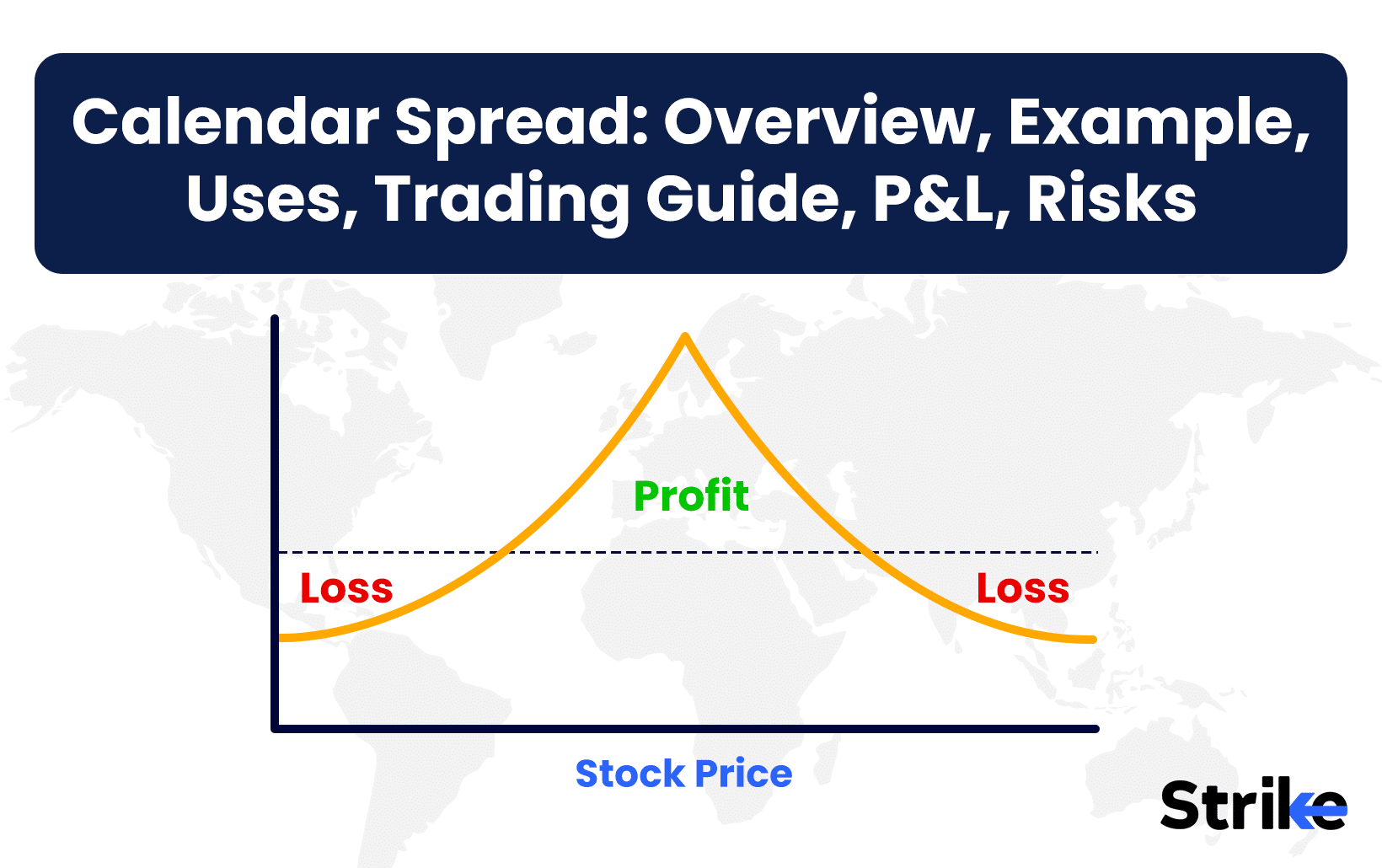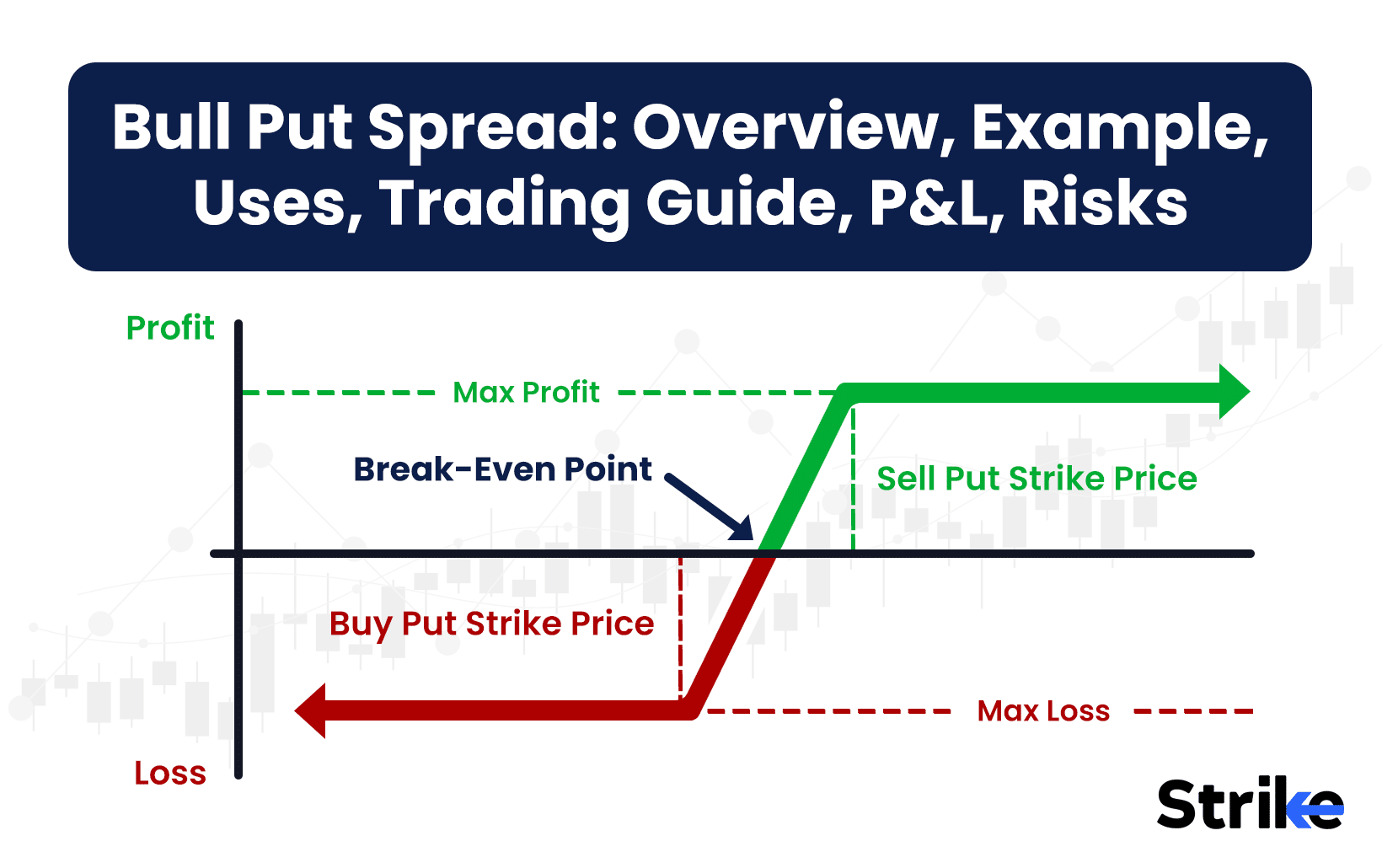Arbitrage is a financial strategy that involves buying and selling the same or similar asset in different markets simultaneously. Arbitrage is done to profit from the price differences between different markets of the same asset. Traders look for these differences in the pricing of assets in different markets to make a profit
The arbitrage term itself was first used in the 18th century. In the early days, arbitrageurs would take advantage of price discrepancies in different markets by buying low in one market and selling high in another. Arbitrage became more sophisticated, with traders using complex algorithms and computer models to identify and exploit pricing inefficiencies. Arbitrage is a key strategy today used by hedge funds, investment banks, and other financial institutions to generate profits in a fast-paced, highly competitive global marketplace.
What is Arbitrage?
Arbitrage is the trading strategy where traders buy a security in one market & sell it in another market to profit from the price difference between these two markets. Arbitrage’s objective is to profit from the temporary difference in cost per share between the two markets. The quantity of the underlying asset bought and sold should be the same, and the pay-off from the trades should be large enough to cover the costs involved in executing the trades for arbitrage to be successful.
Arbitrage opportunities arise when there is a lag in information between different markets. A stock is trading at a lower price on one exchange than another due to the delay in information flow between the two exchanges.
How does Arbitrage work?
Arbitrage is a trading strategy aimed at profiting from the differences in the prices of the same asset in different markets. Arbitrage strategy exploits short-lived variations in the price of identical securities and takes advantage of the inevitable inefficiencies in markets. The main principle behind arbitrage is to buy low in one market and sell high in another, simultaneously, thus capturing the price difference as the net pay-off from the trade.
Consider a situation where Company X’s stock is trading at $50 on the New York Stock Exchange (NYSE) and simultaneously trading at $52 on the Tokyo Stock Exchange (TSE). An arbitrageur would buy the stock on the NYSE for $50 and sell it on the TSE for $52, making a profit of $2 per share. The arbitrageur can repeat this process until the prices of the stock in both markets converge or until the profit opportunity disappears.
What is the importance of Arbitrage?
Arbitrage is important in finance as it is based on the principle that the price of a security should remain the same across all markets. This principle that arbitrage uses is known as the law of one price. The law of one price assumes no arbitrage opportunities are available, and prices should reflect the asset’s true value.
Arbitrage profits are examples of abnormal returns that go against the principles of market efficiency, which suggests that all publicly available information is already incorporated into the price of an asset. In an efficient market, no individual or group of traders should be able to consistently earn above-average returns through arbitrage.
However, in reality, markets are only sometimes efficient, and arbitrage opportunities exist, albeit for a short time. These temporary price differences allow traders to earn profits by buying low in one market and selling high in another.
The law of one price and arbitrage provides the basis for financial models that assume that prices should conform to this principle. Market efficiency is not always perfect, arbitrage helps to ensure that prices remain in line with their true value, ultimately creating more efficient and transparent markets.
What is the purpose of Arbitrage?
The purpose of arbitrage is to take advantage of price discrepancies between two or more markets to make a profit. By buying an asset in one market at a lower price and then selling it in another market at a higher price, arbitrage traders are able to generate profits without taking on any additional risk. Arbitrage occurs in both the stock and foreign exchange markets, as well as in other asset classes such as commodities and derivatives.
What are the Types of Arbitrage?
There are seven main types of arbitrages. They include retail arbitrage, merger arbitrage, convertible arbitrage, risk arbitrage, dividend arbitrage, futures arbitrage, and pure arbitrage. The way each arbitrage works differentiate them.
1. Retail Arbitrage
Retail arbitrage is a type of arbitrage trading that involves taking advantage of price discrepancies between physical stores and online stores. Retail arbitrage is a way to make money by buying items at a physical store and reselling them online for a higher price. The difference between the prices of the same product in different stores is known as the “arbitrage spread”.
Retail arbitrage differs from other forms of arbitrage in that it involves taking advantage of price discrepancies between physical stores and online stores. Merger arbitrage, convertible arbitrage, and options arbitrage involve taking advantage of price discrepancies between different markets.
Retail arbitrage requires minimal start-up capital, is quick to implement, and generates significant profits. It also requires significant effort and time to research and find good products. It also carries the risk of being undercut by competitors.
An example of retail arbitrage is buying a product at a physical store for Rs.10,000 and reselling it online for Rs.20,000. The Rs.10,000 difference is your profit.
2. Merger Arbitrage
Merger arbitrage is an investing strategy that capitalizes on the difference in price between the target company’s stock price and the price offered by the acquirer in a merger or acquirement.
The differences between merger arbitrage and other types of arbitrage lie in the potential risks and rewards associated with the transaction. Merger arbitrage is less risky than other forms of arbitrage due to the long-term nature of the transaction and the ability to hedge some of the risks associated with the acquisition.
Merger arbitrage provides a high potential return with relatively low risk. It is also a relatively low-cost strategy and does not require the trader to take on a large amount of leverage.
Pros of merger arbitrage include the fact that investors capitalizes on the difference in price between the target company’s stock price and the price offered by the acquirer, as well as the potential for a high return on investment.
Cons of merger arbitrage include the fact that there is a great deal of uncertainty surrounding the transaction and the potential for the deal to fall through. This leads to a loss of capital for the investor.
An example of merger arbitrage is if a company announces a merger with another company, and the target company’s stock price jumps above the price offered by the acquirer. An investor could purchase stock in the target company and hold it until the acquisition was completed, thereby capitalizing on the price difference.
3. Convertible Arbitrage
Convertible arbitrage is an investment strategy where an investor will purchase a convertible bond and simultaneously sell short the stock into which the convertible are converted. Convertible arbitrage’s idea is that the investor profits from a discrepancy in the convertible arbitrage spread.
Convertible arbitrage’s biggest advantage is that it offers investors an opportunity for additional profits and helps reduce market risk by diversifying across different asset classes. Convertible arbitrage strategies have historically experienced lower volatility than traditional equity strategies.
The main disadvantage of convertible arbitrage is that it involves riskier activities than traditional arbitrage. It involves taking on the stock and the convertible bond risk. The liquidity risk of the underlying securities could be quite high.
Suppose a company, ABC issues a convertible bond that pays a fixed interest rate of 8% per annum and has a maturity of 5 years. The bond is convertible into equity shares of ABC at a conversion price of Rs. 150 per share. Currently, the market price of ABC’s stock is Rs. 170 per share.
A convertible arbitrageur could buy the convertible bond for Rs. 1,000 (face value) and simultaneously short-sell 6.67 shares of ABC (Rs. 1,000 divided by Rs. 150) in the spot market, worth Rs. 1,132 (6.67 shares x Rs. 170). This creates a net credit of Rs. 132.
4. Risk Arbitrage
Risk arbitrage is an investment strategy that seeks to take advantage of price discrepancies between related securities, often caused by corporate events such as mergers, restructurings, and takeover bids. Risk arbitrage involves buying the undervalued security and selling the overvalued security, with the expectation that the prices will converge as the corporate events unfold.
The main difference between risk arbitrage and other forms of arbitrage is that it involves taking a short-term risk, as there is a possibility that the arbitrageur will not be able to close out the positions prior to the prices converging. This could either result in a loss or a gain, depending on the direction and magnitude of the price movements.
The main advantage of risk arbitrage is the potential to earn high returns in a short period of time. Arbitrageurs are able to take advantage of price discrepancies that exist in the market, and if the prices converge as expected, large profits are realized.
The main disadvantage of risk arbitrage is that it involves taking a short-term risk. The arbitrageur could incur losses if the prices do not move in the expected direction or magnitude, In addition, risk arbitrage is time-sensitive, and the arbitrageur needs to be able to close out the positions prior to the prices converging in order to take advantage of the mispricing.
An example of risk arbitrage is the acquisition of a company by another company. If the market prices of the target company are lower than the offer price, the arbitrageur buy shares of the target company and short-sells shares of the acquiring company. If the market prices of the target company converge to the offer price, the arbitrageur closes out the positions and earns a profit.
5. Dividend Arbitrage
Dividend arbitrage is a form of arbitrage that involves taking advantage of the difference in share prices before and after the ex-dividend date. The dividend arbitrage strategy involves buying the stock before the ex-dividend date and then selling it on the same day at a higher price. This allows investors to capitalize on the difference in share prices without directly engaging in the stock market.
The difference between dividend arbitrage and other forms of arbitrage is that, in the case of dividend arbitrage, investors are taking advantage of the difference in share prices before and after the ex-dividend date. Other forms of arbitrage involve taking advantage of pricing discrepancies in different markets.
The main advantage of dividend arbitrage is that it allows investors to capitalize on the difference in share prices without directly engaging in the stock market. This benefits investors who need more time or resources to actively trade in the stock market.
The main disadvantage of dividend arbitrage is that it requires investors to buy the stock before the ex-dividend date. This means that there is a risk that the stock price could fall significantly before the ex-dividend date, resulting in a loss for the investor.
For example, if an investor buys a stock for Rs. 50 per share before the ex-dividend date and sells it for Rs. 55 per share on the same day, the investor will make a profit of Rs. 5 per share. This profit is made without having to actively engage in the stock market.
6. Futures Arbitrage
Futures Arbitrage is a strategy that involves taking advantage of discrepancies in pricing between two different markets for a fututes instrument. Futures arbitrage involves buying the futures in one market at a lower price and selling it in another at a higher price, thus making a profit.
The main difference between Futures Arbitrage and other arbitrage strategies is that Futures Arbitrage involves taking advantage of discrepancies in the prices of futures contracts. Other arbitrage strategies involve taking advantage of discrepancies between two or more different types of securities.
Pros of Futures Arbitrage include the potential for high returns in a relatively short period and the ability to capitalize on discrepancies in market prices without possessing the underlying instrument.
Cons of Futures Arbitrage include the high risk associated with this strategy and the fact that it requires a good understanding of the markets and the instruments being traded.
An example of Futures Arbitrage would be buying a gold futures contract in the US and selling the same contract in India at a higher price, thus making a profit.
7. Pure Arbitrage
Pure arbitrage is taking advantage of a price difference between two or more markets to make a risk-free profit. Pure arbitrage involves simultaneously buying and selling the same financial asset, commodity, or currency in different markets to take advantage of the price difference.
The main advantage of pure arbitrage is that it is a low-risk strategy. Since the investor is simultaneously buying and selling the same asset, at least one of their orders is guaranteed to be profitable.
The main disadvantage of pure arbitrage is that it is a complex and time-consuming process. It requires access to multiple markets and acting quickly to take advantage of the price discrepancies before they disappear.
For example, an investor notices that gold prices are higher in New York than in London. The investor buys gold in London and then simultaneously sells it in New York to take advantage of the price discrepancy and make a risk-free profit.
What are the Uses of Arbitrage in Investment?
Arbitrage trading has five main benefits. The main benefits of arbitrage trading are listed below.
- Arbitrage trading is relatively low-risk compared to other trading strategies. This is because arbitrage involves buying and selling the same asset simultaneously in different markets to take advantage of the price difference, eliminating the risk associated with holding onto a security or asset for a longer period.
- Arbitrage trading plays an important role in reducing price discrepancies between different markets and in helping to achieve market equilibrium. By taking advantage of the price differences, arbitrage traders create buying pressure in the lower-priced market and selling pressure in the higher-priced market, which helps to push prices towards parity across different markets.
- By exploiting price discrepancies across different markets, arbitrageurs help to ensure that prices for the same assets remain consistent across all markets. This helps to reduce market inefficiencies and promote market transparency, as traders quickly and easily identify opportunities to buy and sell assets at the best possible prices.
- Arbitrages are also accessed through arbitrage funds, making investing easier. Arbitrage funds are a type of investment fund that allows investors to gain exposure to arbitrage opportunities without having to directly engage in arbitrage trading themselves. These funds employ professional fund managers who use a range of strategies to identify and exploit price discrepancies across different markets.
Abirtages have advantages but risks too. It is advisable for investors to consider their risk profile and goals carefully before investing hence.
What are the risks of Arbitrage?
Arbitrages come with risks since it is a market instruments. Understanding these risks helps investors choose between types of arbitrage. Below listed are a list of risks.
- The pay off of arbitrages is highly unpredictable. One reason for this unpredictability is that the price movements in financial markets are highly volatile and change direction suddenly and unexpectedly. This means that even if a trader identifies an arbitrage opportunity, there is no guarantee that the market will move in the expected direction, and the anticipated profit may not materialize.
- Investing in arbitrage opportunities through funds are a viable option for investors who want exposure to this strategy but need more knowledge or resources to execute it themselves. But such funds have higher expense ratios than passive investment vehicles like index funds. The reason for this is that the active involvement of fund managers is required to identify and execute arbitrage trades. Fund managers need to constantly monitor the market for potential arbitrage opportunities, assess their risk and profitability, and execute trades in a timely manner to capture the profit. This requires extensive research, analysis, and expertise, which translates into higher expenses for the fund.
The best approach is to identify your horizon and research to find an arbitrage option that works for you before investing.
What are examples of Arbitrage?
Below are two hypothetical examples of arbitrage trading.
Suppose that the shares of Reliance Industries Limited (RIL) are trading at INR 2,000 on the National Stock Exchange (NSE) in India, while at the same time, they are trading at INR 2,050 on the Bombay Stock Exchange (BSE). An arbitrageur could buy RIL shares on the NSE at INR 2,000 and simultaneously sell them on the BSE at INR 2,050, making a profit of INR 50 per share. This type of arbitrage is known as “inter-exchange arbitrage, ” which capitalizes on price discrepancies between two different exchanges trading the same security.
If we take another example, suppose that Apple Inc’s stock is trading on the NASDAQ stock exchange in the United States at a price of $120 per share. At the same time, Apple’s American Depositary Receipts (ADRs) are trading on the Tokyo Stock Exchange (TSE) at a price of ¥13,500 per ADR. Suppose the current exchange rate between the US dollar and Japanese yen is 1 USD = 105 JPY.
An arbitrageur could buy Apple shares on the NASDAQ for $120 per share and sell the equivalent number of Apple ADRs on the TSE at ¥13,500 per ADR. If the exchange rate remains stable, the arbitrageur would make a profit of ¥1,500 per ADR, which translates to a profit of $14.29 per share after converting the JPY profit to USD. This type of arbitrage is known as “international arbitrage, ” which capitalizes on price discrepancies between securities traded in different countries.
What exactly are Arbitrage possibilities?
Arbitrage opportunities are situations in which a trader simultaneously buy and sell the same asset in different markets or locations at different prices. This allows the trader to benefit from the difference in prices of the same asset across markets.
Arbitrage opportunities are often fleeting, requiring traders to act quickly in order to take advantage of the difference in prices. This type of trading is generally considered to be low risk and has a low margin of error.
Why does Arbitrage occur?
Arbitrage occurs when there is a discrepancy in the price of an asset in two different markets. By taking advantage of the difference in prices, an arbitrage trader buys the asset in the lower-priced market and sells it in the higher-priced market, thus making a profit.
Arbitrage is often used in stocks, forex, and other financial markets. It is also be used in commodities, cryptocurrencies, and other markets. Arbitrage is a useful tool for traders as it helps to maximize profits while minimizing risk.
When is the best time to use Arbitrage?
The best time to use arbitrage is when there is a significant difference between the prices of an asset or security across different markets. This difference must be large enough to cover the cost of executing the arbitrage trade. Generally, traders look for a price difference of at least 0.5%, but the exact percentage depends on the liquidity of the asset. Arbitrage trades must be completed quickly also in order to take advantage of the temporary price difference.
Is Arbitrage beneficial?
Yes, arbitrage are beneficial. Arbitrage opportunities exist in many markets and provide investors with a low risk way to make high returns. For example, if a stock is trading for Rs.10 in one market and Rs.15 in another, an investor purchases the stock in the cheaper market and then sell it in the more expensive market and make an Rs.5 profit. In addition, arbitrage often provides a hedge against market volatility and diversifies risk.
Can you predict when Arbitrage will occur?
Yes, it is possible through research and analysis. But predicting when arbitrage occurs is difficult as there are a number of factors that affect prices, such as market volatility, supply and demand, and changing economic conditions.
Traders must closely monitor the market and observe price movements to identify when arbitrage opportunities arise. They must understand the fundamentals of the underlying asset or market to make informed decisions.
Is it possible to use Arbitrage in the Stock Market?
Yes, it is possible to use Arbitrage in the Stock Market. For example, a stock is trading at a lower price in one market than it is in another, then the trader buys the stock in the cheaper market and simultaneously sell it in the more expensive one, locking in a profit.
This type of trading requires a trader to have a good understanding of stock market dynamics and access to multiple markets. Additionally, arbitrage opportunities don’t last long and so traders must act quickly to take advantage of them.






 Previous Article
Previous Article






No Comments Yet